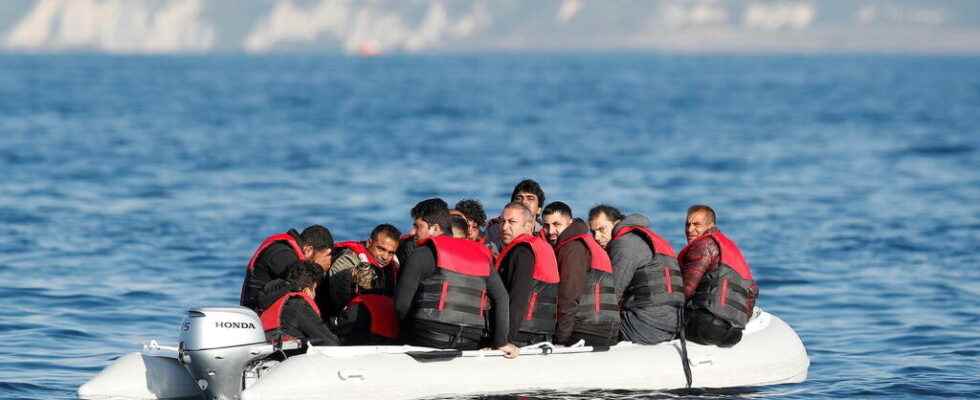More than 250 exile candidates were rescued in La Manche in just four days. A figure communicated again last week by the maritime prefecture of the Channel, which illustrates a phenomenon which continues to grow. Illegal crossings between the French coasts and the English coasts.
With our special correspondent at Tréport and Berck, Marie Casadebaig
The departures of makeshift boats began in 2018, when access to the French port of Calais and the Channel Tunnel was locked by the police. Since then, migrants take more and more risks, and go further and further on the coast, even if it means extending their journey time. At Berck-sur-Mer, you can no longer see the English coast. They are 60 km away, instead of 30 in the Calais areamuch further north.
However, boat departures have become almost daily. A phenomenon that Jean-Marc Lamblin, boss of the SNSM, the national sea rescue company, in Berck, has observed for more than a year: ” They don’t necessarily need to do the 60 km. Their goal now is above all to reach English waters and there, the English Border Force will recover them for safety to bring them back to English territory. »
And it’s their mobile phone by changing network that tells them where they are. The inflatable boats used are getting longer and longer. They can have up to 60 passengers.
To try to prevent these crossings, patrols are organized 24 hours a day. But impossible to be everywhere, so much the departure zone has extended. The gendarmerie group, led by squadron leader Stéphie Hersand, supervises 20 km of coastline. ” Means are really important in the company sector. Now, the passers in front are also reactive and constantly adapting. So the goal is to always stay as close as possible to this phenomenon and to adapt constantly. The terrain, made up of dunes and prickly thickets, does not facilitate the progress of the migrants, nor that of the gendarmes. But it allows people and equipment to be concealed.
Migrant rescues in northern Normandy
Even further south, on the French coast, local rescuers in Le Tréport, in Seine-Maritime, were faced with their first rescue of migrants at sea. Éric Chevallier shows us the report of this intervention which he does not risk d ‘to forget. At around 6 a.m. on July 23, he was called by the state surveillance and rescue center. An overloaded boat broke down 15 nautical miles (approximately 28 km).
On approach, the rescuer quickly understands what it is: ” We see photos of our colleagues who are a little further north, and so we have already seen rescues of migrants. We call it mass rescues. 49 people were present on board a zodiac.
Éric Chevallier’s team, which has only received theoretical training in this type of intervention, is forced to adapt, to recover the castaways: “ Our boat is designed to carry 25 people. But there, we could not say: “we only take 25 on board”, It is not possible. So we took everyone. The only English word I used was “sit down” because as soon as there was a movement. The boat was heeling [s’incliner sur le côté] and that is not good. »
Five hours later, the operation is over, but Éric and his teammates remain marked by this experience. ” It hurts my heart. It’s really going to clash to embark 50 people on an 8 m sausage with a 40 hp engine. We feel that it is despair. And what’s more, they must have said to themselves that it had failed and that they had to start over. And then certainly they left some money to smugglers. »
Departures taking place further and further south of the coast, the resort of Le Tréport will be trained in mass shipwrecks in October.
►Read on InfoMigrants: In the Channel, the departures and arrivals of migrants do not weaken
